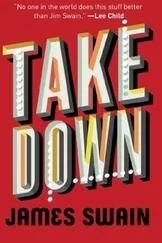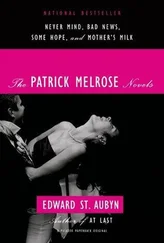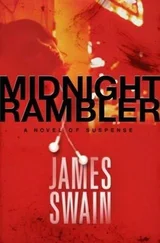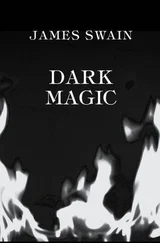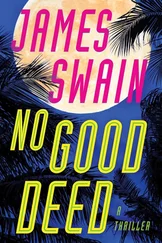“They sure write about everything else. Bake sales, bicycles getting stolen, the local high school firing its basketball coach. But no mention of this. I went on Facebook, and typed the words ‘Mummified hands, Saint Augustine’ into the search engine. A dozen people in Saint Augustine who had posted comments popped up. They sounded scared, and were asking each other when the police were going to do something.”
“Like it was being covered up,” Daniels said.
“That’s what it felt like,” her niece said. “One of the comments was really strange. A woman asked her friend if she thought the mummified hands were linked to the museum. Her friend replied with a half dozen question marks.”
“Did the woman mention the museum’s name?” Daniels asked.
“No, she didn’t. But I found it anyway.”
“How did you do that?”
“I went to Google, and typed in the words ‘Mummified hand, Saint Augustine.’ A link for the Villa Zorayda Museum popped up. It’s an old house that was built to look exactly like a famous palace in Spain. The house is filled with Egyptian artifacts, including the world’s oldest rug. It was taken from a pyramid with a mummified hand wrapped inside, and is woven with cat hair. It’s called the Sacred Cat Rug, and people think it’s cursed. The museum won’t let it be photographed, so there’s a drawing on their site instead.”
“How does this connect to the hands that showed up on people’s doorsteps?” Daniels asked.
“I was just getting to that. It’s believed that if a person sets foot on the rug, they’ll be cursed, and die a horrible death. They claim that it hasn’t happened recently, but get this. During a recent restoration of the rug, a mummified hand was found on the front steps of the museum.”
“Seriously?”
“Uh-huh. Pretty weird, don’t you think?”
“It could just be an urban legend.”
“That’s what I thought. I emailed the museum, and pretended to be a reporter writing an article about the rug. I got a reply right away. A nice woman said the story was true, and that the museum had filed a report with the police.”
Daniels glanced at Jon, and saw him mouth the word, Wow! She felt the same way. This couldn’t be a coincidence. Nicki had hit it right out of the park.
“This is amazing, Nicki. Thank you,” Daniels said.
“Are you going to visit the museum?”
“I think that would be an excellent idea.”
“Right now?”
“I don’t see why not. We’re parked across from the old fort. It can’t be too far.”
“I checked the museum out on Yelp. Several reviewers recommended a guide named Katya. They said she was really knowledgeable about the history of the rug.”
Daniels shot Lancaster a look. His eyebrows went up.
“Katya with a y ?” Daniels asked.
“That’s right. How did you know?” her niece replied.
“Lucky guess. Thanks for all your help. Talk soon.”
The Villa Zorayda Museum did look like a palace, just as Nicki had said.
It was built in the Moorish Spanish Revival style of architecture that was prominent throughout Saint Augustine. Built on a foundation of poured concrete over a century ago, it had survived countless tropical storms and hurricanes.
The walk from the old fort had taken fifteen minutes. Along the way, they’d stopped to buy coffee, which they drank from Styrofoam cups. The city’s sidewalks were teeming with out-of-towners, and they blended right in.
Beth had decided that they should enter the museum pretending to be tourists, and see what they could learn about the Sacred Cat Rug. Saint Augustine had many secrets, and announcing they were law enforcement would not work to their advantage.
An ornate sign on the front lawn said that the museum had been placed on the National Register of Historic Places in 1993. The place felt legitimate, and Lancaster guessed that there was some truth to the rug’s dark history.
“Do you want to do the talking, or should I?” he asked.
“This one’s yours,” Beth said.
They dumped their coffee cups into a trash bin and went inside. The main lobby was two stories high and felt like a scene out of 1001 Arabian Nights , the Moorish design on full display. The museum stayed open late during tourist season, and he purchased two tickets. A girl who looked like she was in high school stepped forward. She wore a floor-length dress and had her hair in a ponytail.
“Welcome to the Villa Zorayda,” the girl said. “My name’s Sierra, and I’ll be your tour guide. Before we begin, please be aware that there are several exhibits where photography is prohibited. If you don’t abide by the rules, your cameras will be confiscated.”
“Putting mine away right now.” Beth dropped her cell phone into her purse.
“Me too,” Lancaster said, putting his cell phone away.
“Great! Please follow me,” Sierra said.
They started on the ground floor. The building had a rich history, and Sierra shared stories from when it was a casino, speakeasy, and gourmet restaurant, while describing the original art and valuable antiques from the previous owner’s collection. Sierra was older than she looked, and Lancaster guessed she was in her midtwenties. That made her closer to Katya’s age, and he wondered if they knew each other.
They climbed a staircase to the second floor. The upstairs bedrooms were bigger than most people’s apartments, and were filled with paintings and thick Persian rugs. There was so much stuff crammed into the rooms that it felt like an antique store.
The Sacred Cat Rug was in the last bedroom, and hung on the wall. It looked like a pregnant zebra, the body clumsily drawn, the legs poorly rendered, and might have fetched fifty bucks at a backyard sale. Its history made it important, and the curse that it carried.
“This is the museum’s most famous piece,” Sierra said. “It’s called the Sacred Cat Rug, and is believed to be the oldest rug in the world. It’s woven entirely of hair taken from cats found roaming the river Nile.”
“That’s a lot of cats,” Lancaster said, playing the tourist.
“It most certainly is. The cats weren’t harmed, and were released after their hair was taken. The Egyptians thought cats were sacred, and the penalties for harming one were severe, including being put to death. They revered cats for their ability to control vermin like rats and poisonous snakes, and considered them symbols of good luck.”
Beth reached out as if to touch the rug. Sierra let out a little shriek and grabbed Beth’s arm, stopping her.
“Please don’t do that.” Sierra spent a moment composing herself. She looked shaken and more than a little upset.
“Is this one of the exhibits that can’t be photographed?” Lancaster asked.
“That’s correct. No photographs.”
“May I ask why not?”
“It’s just the rule.”
“But why? The rug isn’t very attractive. The museum can’t be worried about someone creating a knockoff.”
“I don’t make up the rules. Our tour is now completed. I hope you enjoyed yourselves, and will fill out a comment card before you leave. Have a great day.”
Sierra flashed a practiced smile and moved to leave. She seemed eager to part company, and put as much distance between herself and them as possible.
Lancaster said, “Please don’t leave.”
Sierra halted on a dime. Her pleasant demeanor was gone.
“I read online that the rug is cursed,” he said. “Is that why you don’t want people touching or photographing it?”
“That’s just a rumor,” she said.
“There was an article in the newspaper that said a mummified hand mysteriously appeared on the museum’s front steps after the rug was cleaned,” he said.
Читать дальше


